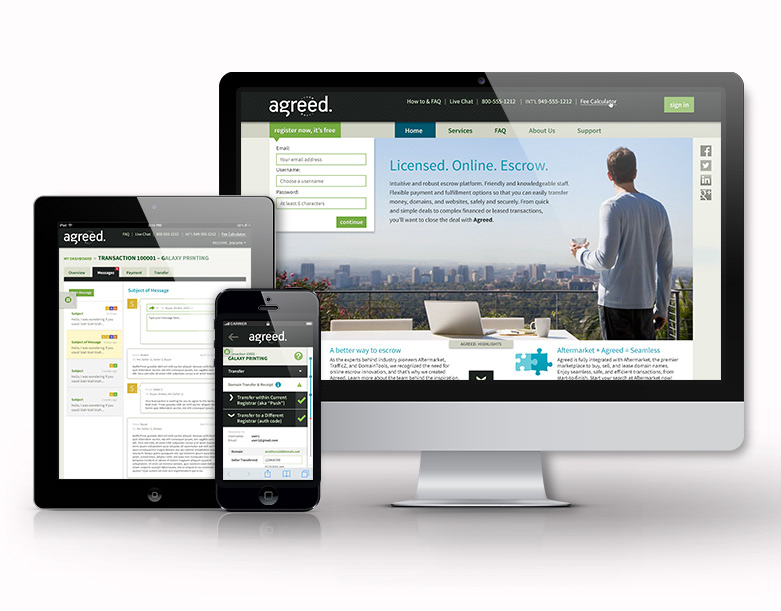CONTENT TONALITY PROJECTS
What do chili peppers have to do with content? Read on to find out.
CHALLENGES: Creating content is a challenge for many organizations without dedicated content teams. (In other words most orgs.) Over the years, I've helped many clients figure out and document their unique tone and voice for their online content. I've also helped clients wrangle the creation and management of content, which can be a huge undertaking that most organizations are not prepared to handle. For a concrete idea of the content-wrangling process see the case study, Descanso Gardens Content.
SOLUTIONS: The Content Tonality Brief (a process and a document)
CLIENTS INCLUDE: Descanso Gardens, BCG, ChattyFeet, Intuition App Invicta Ready, CU Direct, City National Bank, Revolution Lighting
CONTENT TONALITY LURKS EVERYWHERE
HEADERS & SUBHEADS, HELP TEXT, TEASERS, INTRO BLURBS & PARAGRAPH TEXT,
NAVIGATION LABELS, BLOG POSTS, SOCIAL MEDIA POSTS, VIDEO & ANIMATION,
IMAGE CAPTIONS, CALL-TO-ACTION BUTTONS, ERROR MESSAGES
DO YOU HAVE A CLEAR BRAND VOICE? Does your organization have an, intentional, clear brand? Some do. Many don't. If you're putting ideas out there in the form of product info, blog posts, social media, tutorials, heck even your 404 error messages – your brand voice is getting out there too. The trouble is that your voice may be boring, haphazard, misleading, or all of the above. None of which is serving your brand AT ALL.
Done right, brand work CAN be a hefty project, involving months of stakeholder interviews, workshops, brand documentation, and refinement. Not every organization has the resources for a long branding process. But don't neglect your branding completely. There are efficient ways to make your brand talk effectively.
PRIMARY DRIVERS FOR BRAND CONTENT ENHANCEMENT - CLIENT PROJECTS:
DESCANSO GARDENS wanted to replace its dry, institutional voice with vibrant, friendly, welcoming content to entice visitors and new members.
BOSTON CONSULTING GROUP was looking to provide an insightful and convivial tone and voice for community content that would attract its busy internal consulting community despite stretched schedules.
CITY NATIONAL BANK had a brand reputation for delivering a high-touch experience for their private banking clients and wanted their tone to be that of a trusted advisor.
CHATTYFEET needed to coach their writers on how to produce content capable of bringing fun and delight into the humdrum everyday world of typical adults.
INVICTA READY sought to create content for their Perci emergency preparedness app that would succinctly summarize the overwhelming nature of the topic in a confident, calming, and neighborly way.
REVOLUTION LIGHTING didn't have a clear tone and voice and wanted to build its reputation as a seasoned, down-to-earth, and innovative contractor for large projects.
INTUITION wanted to establish a tone and voice for a character assistant (a charming little bug) for their listmaking app. The tonality project helped direct the efforts of illustrators and animators on the look and feel of the character, animation behavior (expressions, body language, stance), and the character's tone and voice for text messaging.
IT USUALLY STARTS WITH A PROJECT. A new product launch or website redesign often uncovers the need for branding and brand tone and voice. Much more than a logo your brand needs to reach out its tentacles to cover many other aspects besides the logo, especially when building something more complex (like a website). Typography, look & feel, color, language, social media messaging, imagery, and video – all of these content types leverage branding to do their jobs well and in concert.
THE CREATIVE BRIEF. Most website design projects will have a creative brief. If you don't have clear branding your website design team will demand you get it together and will document the effort with a creative brief to lay the groundwork for what the brand is and is not, plus major goals, positioning in the marketplace and among competitors, and more. If a client of mine doesn't have existing brand work to leverage, I assist them by providing branding exercises to help the client identify core brand values, brand promise, positioning, benefits, and personality attributes.
AN EXAMPLE. This example creative brief below is a few pages capturing key info the design team uses for their project design journey. The section called Tone and Character Attributes contains a list of adjectives describing the brand. These tone and character attributes is often enough for the visual design team to embark on its work. However, more depth is needed to create content creation with unique, effective tone and voice.
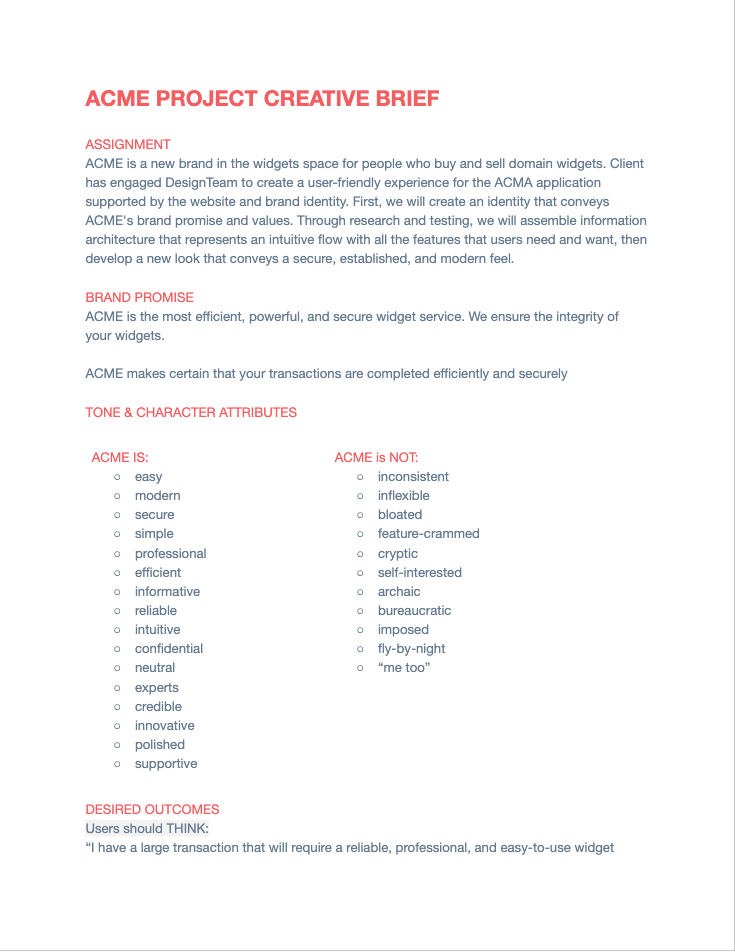
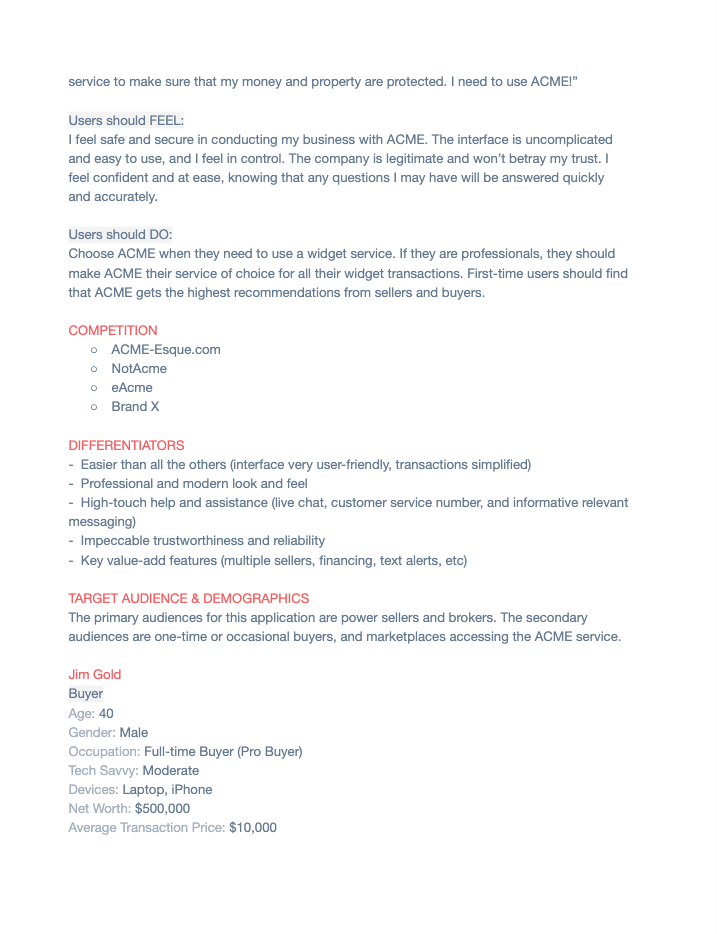
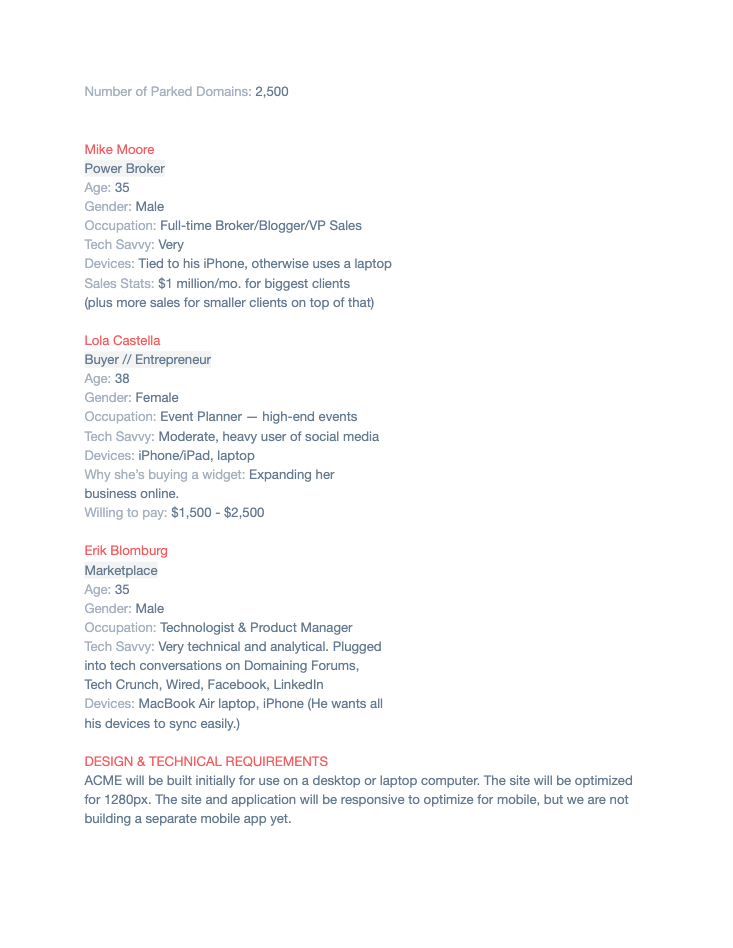
ADDING ADJECTIVES TO YOUR ADJECTIVES. Most of the time, the list of adjectives in the creative brief is not quite descriptive enough to inform the tone and voice meaningfully. "Reliable," is one adjective from the sample brief. But what does "reliable" truly mean for the ACME brand? How does the attribute play out in the creation of actual content for a section of a website? Without a deeper understanding of what "reliable" means to the brand, content creators often miss the mark. "Witty" is another example of an attribute clients ask for frequently. Many brands desire a witty tone. But what does witty mean? Slapstick? Clever and pleasant banter? Clever and snarky quips? It's anyone's guess. Unless – you add adjectives to the adjectives.
CONTENT TONALITY BRIEF. Sometimes known as the Content Tone & Voice Guide, this document is typically longer than a 3-page Creative Brief. The extra (and useful) adjectives expand each attribute definition – and word count. Each attribute gets defined more thoroughly with concrete examples that deepen understanding. I collect examples of other brand content that does a good job of capturing a particular attribute in the same way that my client wants. For a glimpse of a typical content brief see excerpts from Descanso Gardens Tone & Voice Guide below.
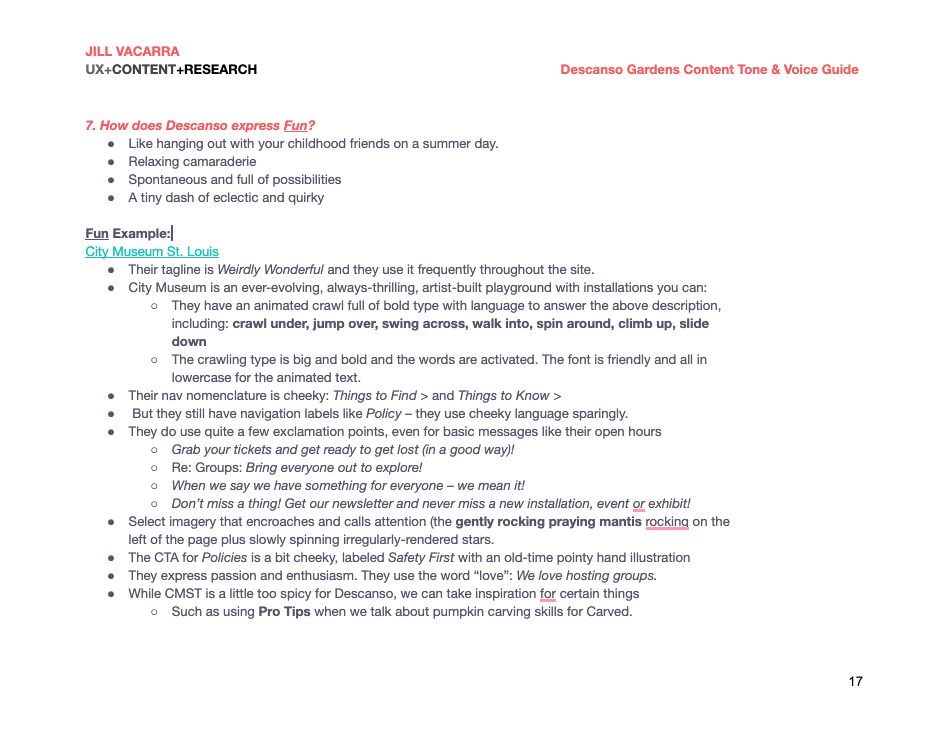
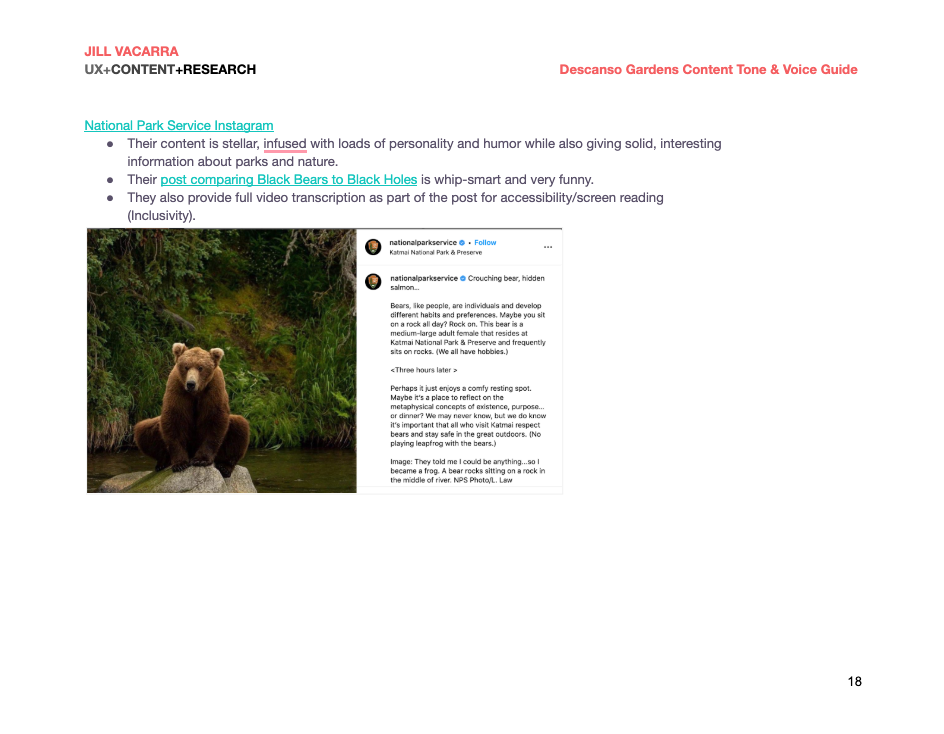



MILD, MEDIUM, OR SPICY? The tonality test clarifies specifics but there's more we can do to make sure the nature of the brand's tone and voice is nailed down. I refer to it as the Chili Pepper Scale.
Part of our goal is to determine which level of intensity or “spiciness” to apply to certain brand content. This exercise also helps us determine where the brand falls on the spiciness scale in general (compared to other competitor brands).
You don’t need to pack dozens of tonality flourishes into the content to add flavor and distinctiveness to brand copywriting. Brands with the most memorable copywriting usually just “pepper” their copy with a few key bits of personality here and there. Often, the rest of the brand’s copy is pretty straightforward. Most brands use a mix of tonality in their content depending on content type and audience. They assign different levels of “spiciness” depending on the type of content, audience, and location. So an About Us section might have pretty basic content, while promotional content or content for a specific audience (say kids) might be a little more spicy.
One Chili: A basic professional tone without a ton of personality or quirkiness.
Two Chilis: A little more personality, but not over the top.
Three Chilis: The maximum amount of personality appropriate for the brand AND for a particular attribute of that brand.
TEST THE TONALITY. Even with a detailed Content Tone & Voice Guide, there's still more a content strategist can do to stack the deck in favor of clear content tonality marching orders. I always include this part of the process when I'm providing copywriting services, but will also do this step when other resources are responsible for creating the content. To test out how accurately we're capturing the tone and voice I work with the client to choose one solid piece of representative content and explore multiple versions of that content. The client reviews and gives feedback so we can hone in on specifics. It makes the writing process a little more precise from here on out, with less likelihood of revisions.
With this test, I explore word choice, spice intensity, and voice personality. Sometimes there are glaring differences between the variations and sometimes the variations are more closely related. But the exercise helps us get closer to a tone and voice that truly represents the brand. This exercise also overlays other content aspects such as reading level, jargon use level of audience expertise, and copy density.

